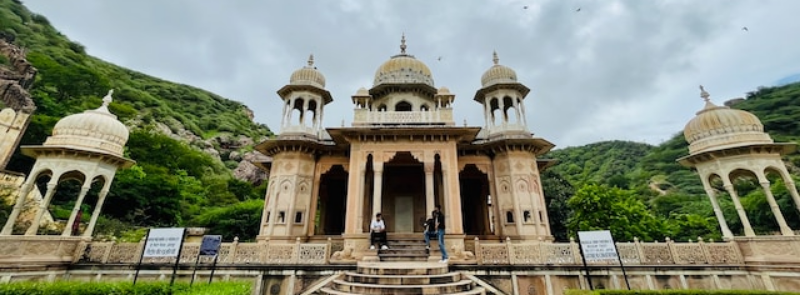
When It Occurs
Every January 25th
Timeline
Days Passed (1023)
# Hashtags
#NationalTourismDay #IndianTourism
India observes National Tourism Day on January 25th annually. This day was instituted by the Indian government to highlight the significance of tourism in bolstering the country's economy.
National Tourism Day serves as an acknowledgment of India's natural splendor and its diverse array of tourism opportunities, encompassing cultural, nature, heritage, educational, sports, rural, and eco-tourism.
Theme and Objectives
Each year, National Tourism Day is marked with a unique theme that focuses on a specific aspect of tourism. The theme often aligns with global trends or domestic priorities in tourism, such as eco-tourism, cultural heritage, or sustainable travel. The themes highlight the variety of tourist experiences available in India, from heritage sites and adventure tourism to spiritual journeys and wellness retreats.
The objectives of National Tourism Day include:
- Promoting Domestic Tourism: Encouraging Indian citizens to explore the diverse regions of their own country.
- Highlighting Tourist Destinations: Bringing attention to lesser-known tourist spots and helping to develop these areas.
- Boosting Economic Growth: Recognizing tourism as a key sector that contributes to job creation, foreign exchange earnings, and infrastructure development.
- Cultural Exchange: Promoting cultural heritage and fostering mutual understanding between tourists and local communities.
- Sustainability and Conservation: Encouraging responsible tourism practices to preserve natural environments and cultural sites.
Importance of Tourism in India
Tourism is a crucial part of India's economy. India is known for its diverse landscapes, rich cultural heritage, and a wide range of experiences that attract millions of tourists every year. Some key aspects of Indian tourism include:
-
Cultural and Heritage Tourism: India is home to many UNESCO World Heritage Sites, including the Taj Mahal, Qutub Minar, Red Fort, Hampi, and Ajanta and Ellora Caves. The country’s rich history, religious diversity, and architectural grandeur make it a popular destination for cultural tourism.
-
Nature and Adventure Tourism: India’s varied landscapes include the Himalayan mountain range, vast deserts like the Thar, beautiful beaches along its coastline, and dense forests. These offer opportunities for trekking, wildlife safaris, and adventure sports.
-
Spiritual Tourism: India is a spiritual destination for millions of pilgrims. Religious sites such as Varanasi, Rishikesh, Amritsar’s Golden Temple, and various Buddhist monasteries attract visitors seeking spiritual enlightenment and peace.
-
Wellness Tourism: India has a strong tradition of wellness and alternative medicine, especially in the form of Ayurveda, Yoga, and Naturopathy. States like Kerala are popular for Ayurvedic treatments, drawing international visitors seeking health and wellness experiences.
-
Ecotourism and Sustainable Tourism: National parks, wildlife sanctuaries, and biodiversity hotspots such as Kaziranga, Jim Corbett, and Sundarbans offer eco-friendly tourism experiences, promoting conservation and responsible travel.
Events and Celebrations
On National Tourism Day, various events and activities are organized by the Ministry of Tourism, state tourism departments, and travel agencies to encourage tourism in the country. These events typically include:
-
Tourism Conferences and Workshops: Discussions on tourism strategies, sustainable travel practices, and development of new tourist destinations.
-
Cultural Programs and Exhibitions: Cultural performances, art exhibitions, and food festivals showcasing the diversity of Indian culture and heritage.
-
Promotions and Discounts: Some travel companies, hotels, and tourism boards offer special packages and discounts to promote travel and encourage tourists to explore different regions.
-
Travel Fairs and Expos: Travel fairs provide a platform for state tourism boards, travel agencies, and other stakeholders to promote destinations and services.
-
Tourist Awareness Campaigns: Campaigns aimed at educating tourists about sustainable practices, safe travel, and the importance of respecting local cultures and environments.
Government Initiatives for Tourism
The Indian government has introduced several initiatives to boost tourism in the country. Some of the most significant programs include:
-
Incredible India Campaign: Launched in 2002, this international marketing campaign has been a major success in promoting India as a global tourist destination. The campaign showcases the diverse culture, traditions, and natural beauty of India.
-
Dekho Apna Desh Initiative: In 2020, the Indian government introduced the "Dekho Apna Desh" initiative to encourage domestic tourism. It promotes travel to lesser-known destinations and highlights unique local experiences.
-
Swadesh Darshan Scheme: This scheme focuses on developing theme-based tourist circuits in different regions of the country. Examples include the Buddhist Circuit, North-East Circuit, and Himalayan Circuit, aimed at developing tourist infrastructure and promoting niche tourism.
-
Prashad Scheme: This initiative is aimed at developing pilgrimage and heritage destinations in India. The scheme focuses on providing world-class infrastructure to attract both domestic and international tourists to these sites.
-
Visa Reforms: India has introduced an e-visa system for tourists from over 150 countries, simplifying the visa process for international travelers. The government has also implemented measures to improve safety and security for tourists.
Challenges in Tourism Development
Despite the vast potential, India’s tourism industry faces several challenges:
-
Infrastructure: Many tourist destinations lack proper infrastructure, such as transportation, accommodation, and sanitation facilities.
-
Environmental Concerns: Over-tourism in certain areas leads to environmental degradation, including pollution, deforestation, and damage to cultural heritage sites.
-
Safety and Security: Ensuring the safety of tourists, especially solo travelers and women, remains a concern in some regions of the country.
-
Seasonal Tourism: Some regions in India, especially hill stations and beaches, experience seasonal fluctuations in tourist traffic, which can impact local economies.
Future Prospects of Tourism in India
The Indian tourism industry has a bright future, with initiatives such as Digital Tourism, Smart Cities, and the promotion of Eco-friendly tourism playing a key role in its development. The government aims to make India a globally recognized travel destination by improving infrastructure, enhancing tourist safety, and promoting the diverse cultural and natural wealth of the country.
Conclusion
National Tourism Day is an opportunity to celebrate and promote India’s tourism industry, which plays a vital role in the nation’s economy and cultural preservation. It encourages both domestic and international tourists to explore the country’s rich heritage, natural beauty, and vibrant culture, while also highlighting the need for sustainable and responsible tourism practices.


